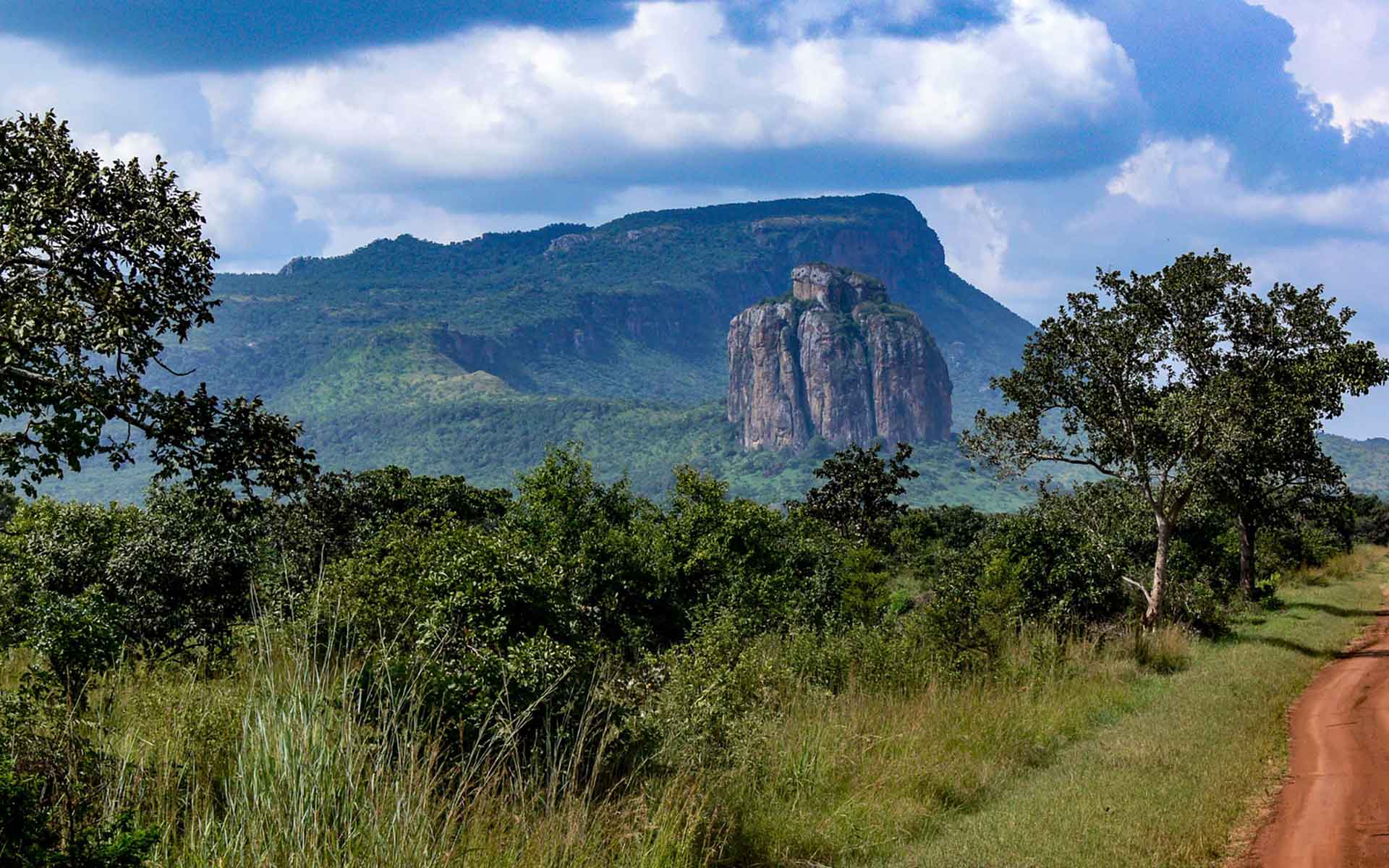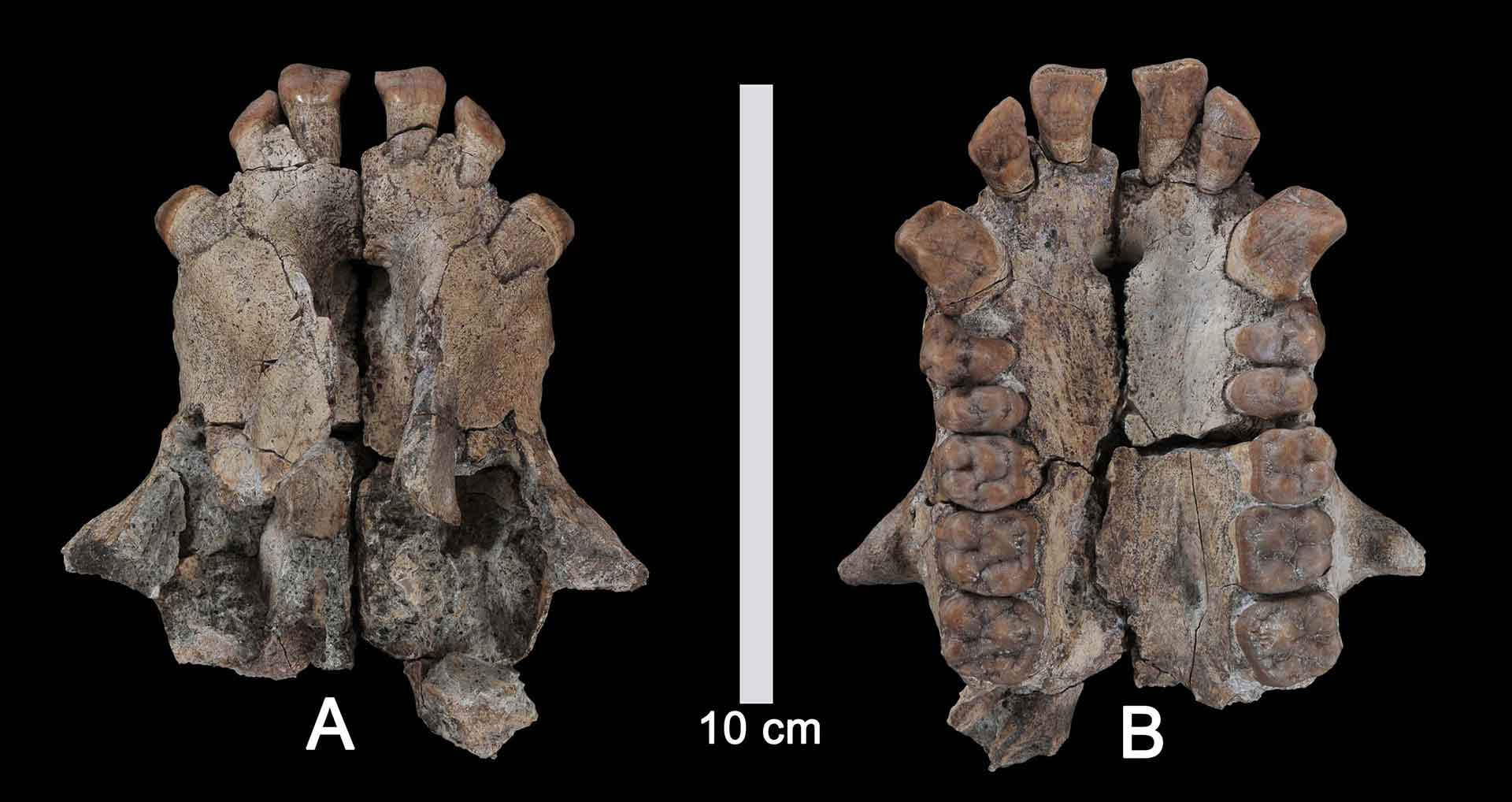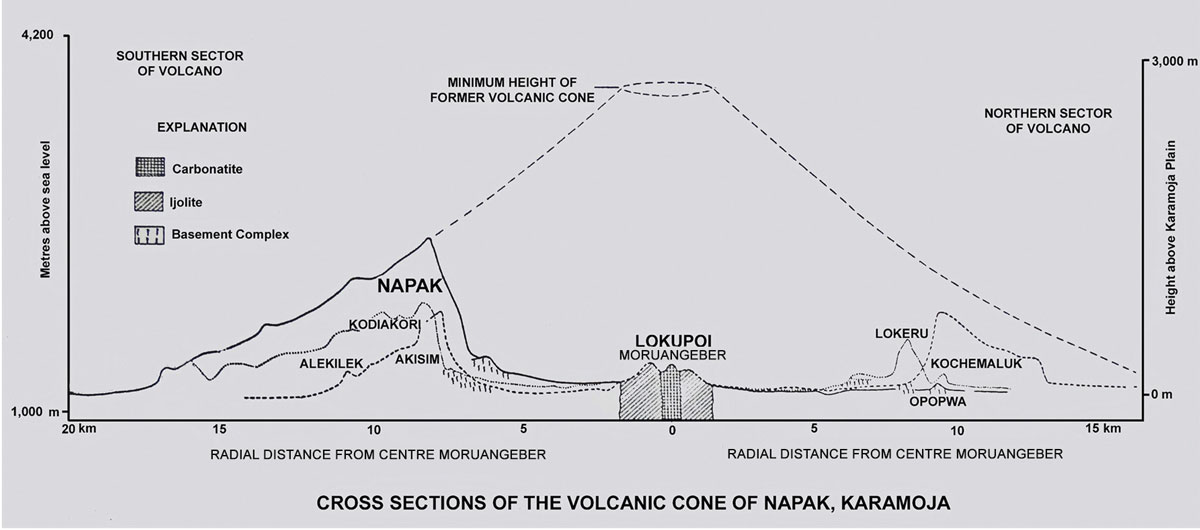
Alekilek in the foreground with Akisim in the background.
Geological Period
Miocene
Main geological interest
Palaeontology
Volcanology
Location
District of Napak Iriri Sub-County, Uganda.
2°08’30.0″N, 34°16’44.0″E
Alekilek in the foreground with Akisim in the background.
One of the richest universal sources of early miocene well-preserved primates associated with an amazing fossil fauna and flora.
Napak is one of the few volcanoes in Africa that exposes its innards as well as parts of the edifice and the central plug. It is thus a natural choice for an IUGS Geological Heritage Site. The volcanic ashes and palaeosols preserve a diverse flora and fauna (including 15 taxa of primates ranging in size from bushbaby to gorilla) adding to its scientific value. These fossils permit the reconstruction of the Early Miocene palaeoenvironment, dominated by forest growing on the slopes of the nascent volcano, with open grassy patches. Given its volcanic, geomorphological and fossil resources Napak is a reference for African geosciences.
- Geological description
Napak is a deeply dissected Carbonatite-Nephelinite Volcano of Early Miocene age (20.5 – 19 Ma) in northeastern Uganda, posed impressively on the rigorously flat Karamoja Plains beneath. The total edifice is 40 kms in diameter, leaving some remnants. It is of great scientific interest for several reasons. It is one of a series of alkaline volcanoes that erupted along the margins of the Great Rift Valley. Napak is also of the greatest interest to volcanologists, in that it provides a rare opportunity to see the insides of a volcano. In effect, erosion has dissected the edifice of the volcano, exposing its flanks in several magnificent cliffs, and its vent. In addition, the volcanic rocks preserve patches of the African Erosion Surface at several outcrops. In most of East Africa, evidence of this geomorphological surface has been destroyed by erosion. Napak thus forms an irreplaceable anchor for geomorphologists interested in the evolution of the African interior since the Oligocene (25 m.y. ago). The volcano-sedimentary deposits yielded a very rich, amazing palaeobiodiversity (fauna and flora) preserved in volcanic ash and palaeosols derived from the carbonate-rich ash which yield evidence about past climates.
- Scientific research and tradition
Following initial geological observations in the 1920’s by E.J. Wayland, B.C. King (1949) mapped the mountains and established their carbonatite–nephelinitic affinities. Fossil discoveries by J. Wilson (1958 unpublished) were followed by Bishop’s collections (1958- 1964). Fieldwork ceased in 1964 due to security issues, but was resumed in 1985 by a Franco-Ugandan collaborative project (see Senut, 2014 and Pickford et al., 2021).
- Reference
Bishop, W.W. (1958) ‘Miocene Mammalia from the Napak Volcanics, Karamoja, Uganda’, Nature, 182(4648), pp. 1480–1482. Available at: https://doi.org/10.1038/1821480a0.
Bishop, W.W. (1962) ‘The mammalian fauna and geomorphological relations of the Napak volcanics, Karamoja’, Record of Geological Survey of Uganda, (1957–58), pp. 1–18.
King, B.C. (1949) ‘The Napak area of southern Karamoja, Uganda: A study of a dissected Late Tertiary volcano’, Memoir. Geological Survey of Uganda, (5), p. 57.
Pickford, M. et al. (2021) Revision of smaller-bodied anthropoids from Napak, early Miocene, Uganda: 2011-2020 collections. (Münchner Geowissenschaftliche Abhandlungen, Reihe A, Geologie und Paläontologie, 51).
Senut, B. (2015) ‘The Miocene Hominoids and the Earliest Putative HominidsHominids’, in W. Henke and I. Tattersall (eds) Handbook of Paleoanthropology. W. Henke, I. Tattersall (eds). Berlin, Heidelberg: Springer (Vol. III: Phylogeny of Hominines), pp. 2043–2069. Available at: https://doi.org/10.1007/978-3-642-39979-4_49.
Wayland, E.J. (1921) Geological Survey of Uganda Annual Report. 1919–20. Geological Survey of Uganda, p. 38.
- Author(s)
Martin Pickford
Muséum National d’Histoire Naturelle
Sarah Musalizi
Senior Researcher, Department of Museums and Monuments, Ministry of Tourism, Wildlife and Antiquities
Jackline Nyiracyiza Besigye
Assistant Commissioner, Department of Museums and Monuments, Ministry of Tourism, Wildlife and Antiquities, Uganda


